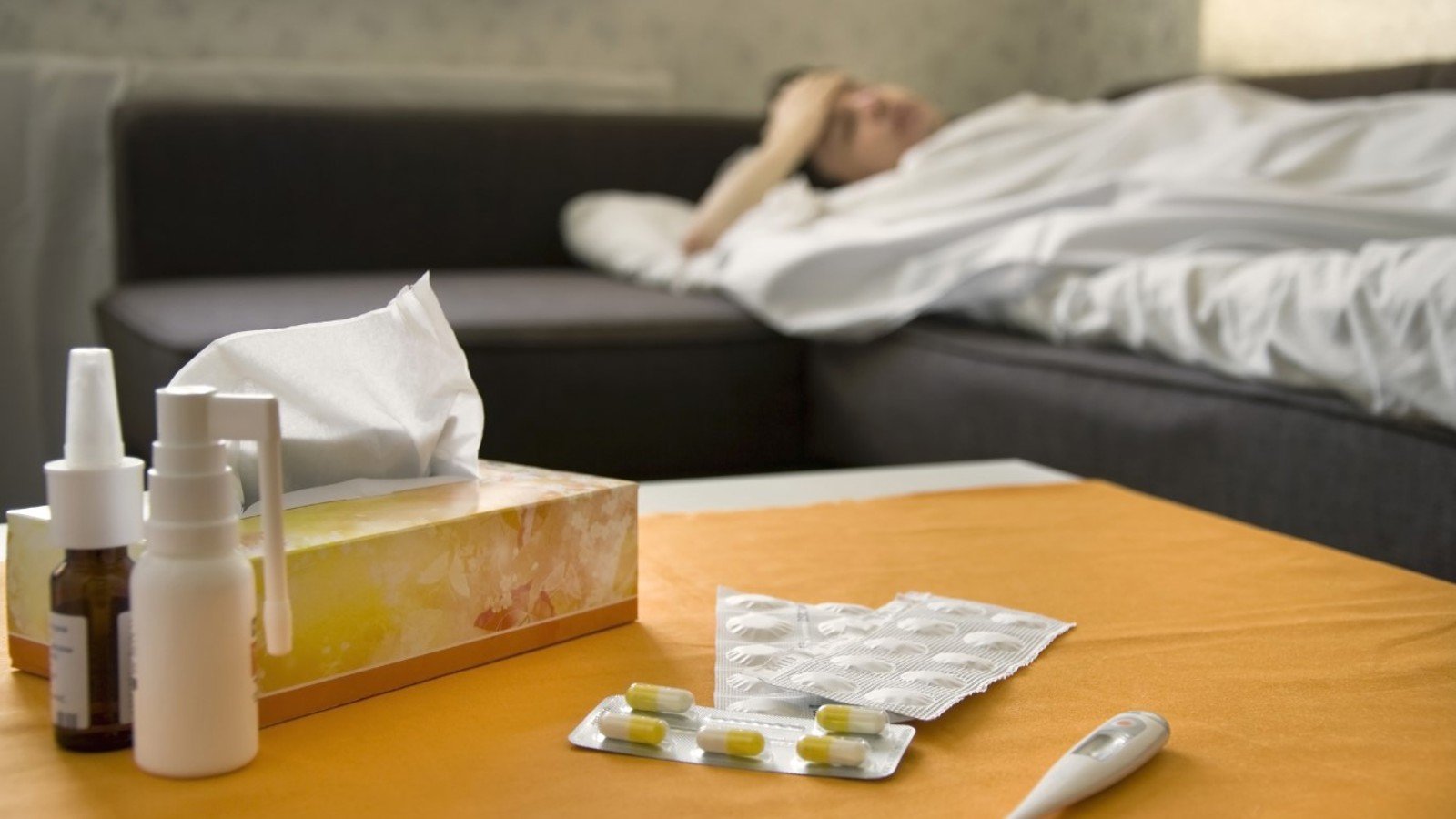Protecting and promoting seafarer health in the maritime eco-system

Wilhelmsen insights
|
Jan Fredrik Bjorge, Technical Sales Manager Cargo Hold Cleaning and Tank Cleaning

“Infectious diseases are recognized as an occupational hazard in seafaring and are closely connected to the conditions of working and living onboard,” says Rune Nygaard, Product Marketing Manager, Marine Chemicals, Wilhelmsen Ships Service. “But a lack of direct access to medical assistance can mean the chances of a seafarer receiving proper and effective treatment are not always as good as for an equivalent worker ashore.”
Understanding the risk
Numerous studies into seafarer illness have confirmed both the unusual nature of the job and the scale of the challenge in measuring the risks, in an industry where labour supply has undergone a seismic shift in recent years.
The most in-depth research has been performed in Northern Europe and in North America where the data are more reliable than in the rest of the world and researchers have access to registers of population.
In the 1990s, a study of seafarers employed on Danish-flag ships found that specific infections, such as Malaria or Hepatitis A were more common in seafarers than in the male Danish population in general.
In a US study, out of some 866 cases and 1,720 contacts with emergency telemedicine providers over a 48-month period, 48% of cases were medical, while just 14% were the result of injuries.
Maritime medicine expert Clara Schlaich and others found in a retrospective study based on incidents recorded in medical log-books from merchant ships under the German flag between 2002-2008, that nearly one-fourth of the visits to the ship’s infirmary were due to communicable diseases, most commonly respiratory and gastrointestinal infections.
Data from the Swedish radio medical service collected in 1997, 2002, 2007 and 2009 found that 33% of all 1,290 consultations concerned infections, most often from the respiratory and digestive system.
The data from these sources show that the majority of consultations and treatments on board - as well as of deaths - are due to medical conditions, rather than injuries, at least in terms of frequency. Among the medical conditions, infectious diseases from the respiratory and digestive system were most prevalent.
Studies which quantify the risk of infectious diseases in seafarers as compared to the general population are rare, especially for diseases that commonly occur in the general population in some countries. Despite the publicity around high profile food and waterborne disease outbreaks onboard cruiseships, rates of infection in crew members tend to be lower than in passengers.
Need for new data
“Most studies on infectious diseases in seafarers are prevalence studies or are based on the ability to take convenient samples, or are reports based on known cases or specific outbreaks,” says Dr Schlaich, who is a partner in a maritime medicine service in Hamburg (www.schlaichpartner.de/index.php). “Only a few research groups on maritime health exist globally and most are in European countries which have a traditional role in the maritime industry but no longer supply the majority of seafaring personnel.”
As a consequence there is very little information on the patterns of infection and illness in seafarers from the mainly Asian countries from which most are now recruited.
“The magnitude of infectious disease occurrence in seafarers as an occupational group is ill-defined due to several challenges,” Dr Schlaich adds. “The global population of seafarers cannot, by the nature of the profession and organization of the international and national shipping fleet, be described and studied as such.”
With a few exceptions, no national or international surveillance systems exist on infectious disease occurrences on ships and any such systems do not collect data on professions in general or seafaring in particular.
“Adding to the complexity is the wide variety of working environments, the varying lengths of employment contracts and the specifics of international shipping, where the ships under the management of a company in one country are registered under a different flag and acquire personnel from a crewing agency in another,” she says.
Within the European Union, the EU SHIPSAN project, currently in its third phase is designed to establish mechanisms at EU level for safeguarding the health of travellers and crew and prevent the cross-border spread of diseases on ro-ro and passenger ships. The database of the Paris MOU on Port State Control, Europe’s ship inspection watchdog, holds no data on shipboard infections and is yet to mount a Concentrated Inspection Campaign on this subject.
Estimating the threat from infectious diseases in seafarers and identifying occupational infectious diseases, requires well-designed and internationally-co-ordinated studies and/or integration in the routine surveillance system of communicable diseases is needed, says Schlaich.
“The data retrieved from these systems will not only be of importance to the workforce in shipping but also be able to detect emerging and re-emerging infections with relevance to the public health in a timely manner,” she says.
Managing infection risks
In the absence of reliable data and without proper training, seafarers remain at risk from a wide range of infectious diseases. These may either result from person-to-person transmission of infectious agents or through food, water or insects onboard ships or in ports, as well as from pre-existing conditions.
As the online Textbook of Maritime Medicine makes clear, prevention of food and waterborne disease starts from well-constructed accommodation, galley, water system and food storage areas. Safe sources for catering materials, training of cooks and everyday ship hygiene and maintenance are essential.
Regulations are also catching up. Hygiene standards in crew accommodation, galley and laundry are some of the common deficiencies noted during the initial inspections under the Maritime Labour Convention 2006, which emphasises the need to maintain clean and sanitary living spaces and galleys onboard.
The Vessel General Permit, required under US regulations related to the quality of discharges from ocean going vessels contains effluent limits not just for ballast water but also for deck runoff, bilge water, and grey water.
From the point of view of the shipmanager, the aim is to reduce potential loss of work-days from illness and infection and to maintain the safety of the ship. The crew member will naturally want to avoid loss of employment when an infection occurs.
In direct response to the challenges faced by the industry, WSS has designed and developed a high quality, standardised range of galley and accommodation cleaning products.
“Every vessel can be viewed as a self-contained eco-system and if inadequate cleaning is allowed to interfere with the natural processes taking place within that eco-system, then problems can occur,” says Nygaard. “For example, the strong acids or alkalis found in some cleaners can destroy beneficial micro-organisms, causing the build-up of organic material, blockages, foaming and foul smells in the waste water system.”
Unitor EasyClean products are designed to limit negative impact on naturally occurring micro-organisms, while Unitor Gamazyme cleaning and treatment products actively assist the breakdown of organic material to keep waste water systems running freely and functioning properly. In this way, the Unitor Galley and Accommodation range gives owners the flexibility to choose the most effective solution for maintaining a clean and healthy on-board environment.
Addressing unique needs
“The unique conditions found onboard ship, require either effective disinfectants or milder microbiological treatments. With living and working areas so close together, keeping galley and accommodation areas clean can be a challenge,” adds Nygaard. “While cleaning operations have to comply with all required rules and regulations, cleaning on board is not the responsibility of specialist cleaning staff.
In addition, crews are in constant rotation and bring different experiences of cleaning products and practices. Misunderstanding could potentially lead to non-compliance, or worse, harm to the crew.
To overcome the challenge of instructing crews who speak different languages, product instructions and wall charts have been designed with easy-to-follow pictograms and colour coding. To promote best practice even further, the Unitor EasyClean and Gamazyme products are supported by an e-learning programme, accessible by all crew members which stay in compliance with MLC principles and VGP requirements in relation to soaps and detergents in grey water.
Historically, cleaning solutions for galley and accommodation areas have been sourced from multiple suppliers around the world, with little attention to consistency of quality, use or documentation. The result is a confusion of products with different application areas and user instructions in various languages. All this takes place against a background of increasing pressure to keep running costs down and the need to ensure predictability of supply.
“Standardisation has clear advantages,” says Nygaard. “Buying and using products and equipment from the same supplier globally makes consumables easily recognisable and manageable in terms of sourcing, use, instruction and application and removes the need for re-training every time a new product is brought on board.”
Instructions are easy to follow, encouraging safe handling and proper use, something which is not always the case with locally-sourced products. Ultimately, says Nygaard, cleanliness has a crucial role to play in promoting good shipboard hygiene and helping seafarers protect themselves from infection.
“It’s a simple thing to say, but cleanliness feels good. It’s the feeling you get after washing your greasy hands or the lift you experience working in a newly cleaned environment. It’s a feeling that can’t be quantified and yet, living and working in the confines of a ship, it’s a vital factor in promoting good practice and a genuine sense of well-being among the crew.”